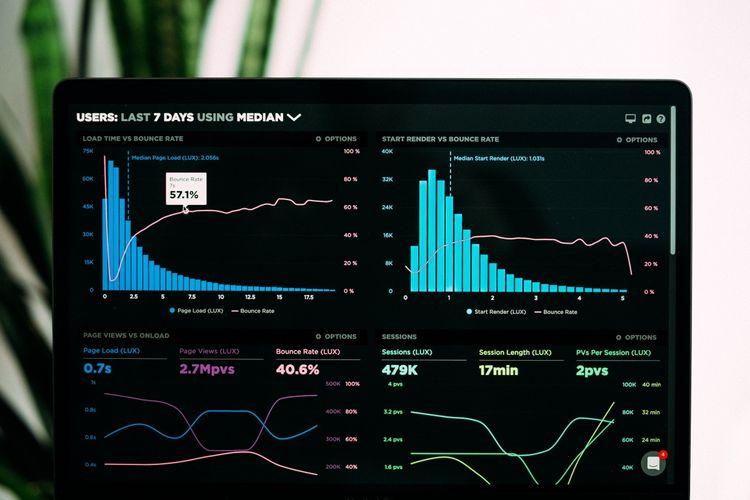How to Calculate Forecasted Sales

Running a business is complicated when you have to make many decisions, especially those aimed at boosting sales. Understanding how to calculate forecasted sales is crucial, as this data significantly influences future strategy planning and resource allocation. You wouldn't want to fall behind on inventory or staffing when sales exceed expectations. Conversely, you don't want to be left with excess inventory when sales fall short. This underscores the importance of sales forecasting.
Sales forecasting should be based on accurate data and is typically handled by finance specialists or marketing managers. This article will provide an overview of forecasted sales, including how to calculate them, examples, and their significance.
What is Sales Forecasting?
Sales forecasting is the process of estimating future sales. Accurate sales forecasts enable companies to make informed business decisions and predict short-term and long-term performance. By forecasting future sales, businesses can make necessary preparations in areas such as budgeting, inventory management, and workforce planning. To reach the goals based on the prediction, they will make proper planning such as budgeting and strategies to execute.
Sales forecasting is usually conducted using a spreadsheet, a dedicated forecasting tool, or a CRM system. The parties involved in creating the forecasted sales often include marketing teams, executives, and business owners. While each group might utilize different tools and methods, it's essential for all of them to understand the basics of calculating forecasted sales as well as the nature of the business.
How to Calculate Forecasted Sales
Step 1: Pick the Method of Forecasting
Selecting a method is essential. Consider the duration your business has been in operation. After two years of operation, growth rate forecasting may be suitable. If your business is newer and has significant marketing expenditures, consider the acquisition-based method.
Step 2: Decide the Period
Different companies might use different periods for forecasting sales. Fluctuations from previous patterns should be a primary consideration. You can opt for an annual or quarterly period. For a stable business, a quarter might be preferable.
Step 3: Pick Assumptions
Assumptions in forecasted sales are vital as they influence your business expenditures. These factors can be both external and internal. Budget increases and decreases are two assumptions affecting market supply and demand.
Step 4: Compiling Data
The final step involves compiling data into your forecasting tool or spreadsheet. This encompasses data like revenue, assumptions, and growth rate. If you have relevant historical data, including it can enhance the accuracy of your forecast.
8 Methods to Forecast Sales
- Historical Data: This method involves looking at past sales data to predict future sales. It assumes that past sales patterns will continue in the future.
- Linear Projection: This method assumes sales will continue to increase or decrease at the same rate observed in past periods.
- Market Testing: For new products or services, a company might conduct a market test in a small area to estimate sales for a broader region.
- Expert Judgement: Sometimes, the opinions of experienced individuals from within or outside the company are sought for sales estimates.
- Delphi Method: A systematic, interactive forecasting method that involves structured multi-step surveys to collect opinions from a panel of experts.
- Time Series Analysis and Decomposition: This involves breaking past sales data down into components (trend, seasonal, cyclical, and irregular components) and forecasting each component separately.
- Regression Analysis: Used to find relationships between independent and dependent variables. For example, a company might look at the relationship between advertising expenditure and sales.
- Market Research: For products or services that haven't been launched yet, companies might conduct research to gauge the potential market size and acceptance rate.
Examples of Sales Forecast Calculations
1. Growth rate-based forecasting
The final step involves compiling data into your forecasting tool or spreadsheet. This encompasses data like revenue, assumptions, and growth rate. If you have relevant historical data, including it can enhance the accuracy of your forecast.
Forecasted Sales Growth = Previous Period’s Sales x Growth Rate Percentage
To determine the growth rate percentage, use the following formula:
Growth Rate Percentage = (Sales Increase / Total Sales from Previous) x 100
Calculation example:
Sales in 2022: $400,000
Sales in 2021: $350,000
Growth percentage = ((400,000-350,000) / 350,000) x 100 = 14.29%
Forecasted sales for 2023 (assuming the growth rate remains the same) = $400,000 x 14.29% = $57,160 increase.
So, the total forecasted sales for 2023 would be $400,000 + $57,160 = $457,160
2. Acquisition-based forecasting
If your business is less than two years old, or if you're launching new products without extensive historical sales data, this method may be ideal for calculating forecasted sales. Acquisition-based forecasting method is often referred to as ‘bottom-up’ forecasting because it begins by focusing on internal costs that drive sales, like advertising budgets, anticipated customer acquisitions, the number of sales staff, expected cost per acquisition, projected conversion rates, and the average order value. By estimating how many new customers can be acquired and how much they will purchase, businesses can forecast their future sales.
The forecasting period is usually short to minimize significant variabilities (i.e., fluctuations in sales projections). Here's the formula:
Forecasted revenue = organic revenue + (ads budget/cost per acquisition) x average order value
Acquisition-based forecasting example:
Given:
Sales from organic revenue: $15,000
Ads spending (ads budget): $5,000
Cost per acquisition: $50
Average order value: $150
Calculation:
Determine the number of acquisitions from ads:
= Ads spending / Cost per acquisition
= $5,000 / $50
= 100 acquisitions
Calculate revenue from those acquisitions:
= Number of acquisitions x Average order value
= 100 x $150
= $15,000
Combine the organic revenue with the revenue from acquisitions:
= Sales from organic revenue + Revenue from acquisitions
= $15,000 (organic) + $15,000 (from ads)
= $30,000
Result:
Forecasted revenue (F) = $30,000
The Benefits of Forecasting Sales
1. Setting better goals
Business owners need to learn how to calculate forecasted sales because it will affect goal setting. The managers and executives should set realistic goals with some strategies. Forecasted sales are the ground insight for the business itself since it is part of the evaluation as well.
Without good forecasted sales, you might end up setting unrealistic goals for the company. It is dangerous, especially for budgeting. You might spend a lot of money on unnecessary things and unpredictable expenses. The salespeople will be confused as well to execute the decisions.
2. Creating strategies
Another reason why forecasted sales are required is to make informed decisions for the business. The forecast will help you determine how to plan strategies, execute them, and develop better products in the future. These are based on marketing potential and efforts.
When the forecasted sales are released and the numbers are lower than predicted, you can adjust your strategy by changing prices, re-evaluating them, and exploring new revenue streams. Accurate forecasting allows you to preempt many issues and adjust plans to meet your goals.
3. Better operations
With accurate forecasted sales, both external and internal operations will run smoothly. The company can improve investor and customer satisfaction through events, support, and promotions tailored for them. The business will be sustainable and enjoy better profits in the future.
4. Proper resource allocations
Based on the sales forecasting, the company may shift production resources to better selling products, stock more inventory, shift advertising and marketing focus, and adjust staffing needs.
Mastering the art of sales forecasting is important for every business decision maker. It serves as the backbone for making informed decisions, setting realistic goals, and strategizing for growth. Accurate forecasting not only helps in predicting profit margins but also strengthens a business's position in the competitive marketplace.

